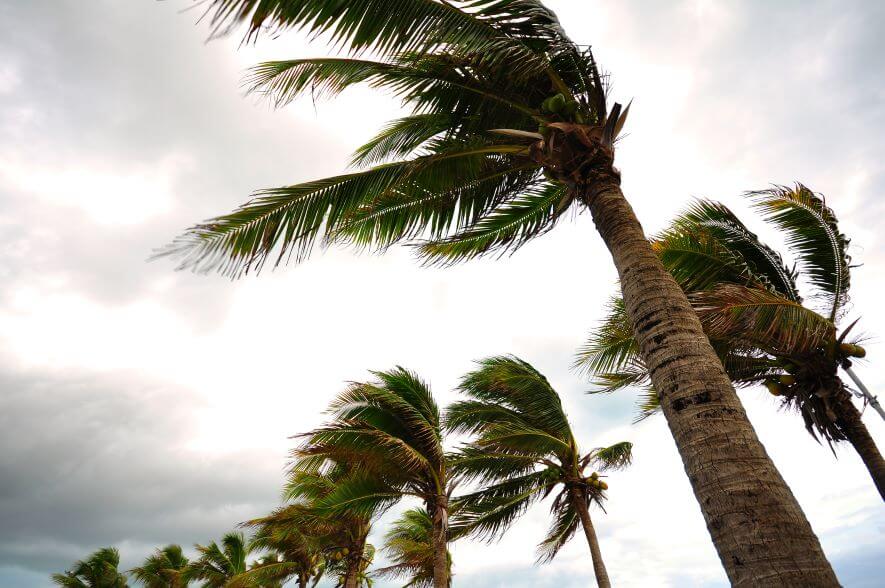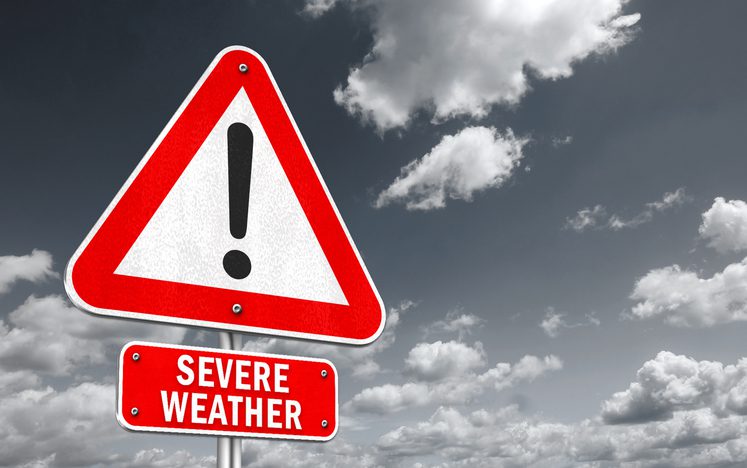Strong winds are one of the most destructive forces in nature, capable of destroying hundreds of miles of property with violent gusts that can exceed 100 mph. But it’s not just 100-mph winds or hurricane-like conditions that can cause damage – even gusts that are much less severe can knock out power or cause damage.
And unlike more confined types of property damage, such as a home fire, strong winds pose a serious threat because they can impact a larger area. If your home is damaged or destroyed by strong winds, chances are high that your neighbors, and nearby rescue and response units, are also suffering from the consequences of wind damage.
This means that it could take several days before you can begin to address and repair any damage.
Follow these tips to prepare your home for strong winds and take the right steps after the wind has subsided.
Long-Term Home Preparations for Strong Winds
If you live in an area that encounters strong winds, you’ll want to modify your home and property to lessen potential damage.
Maintain Trees and Branches
You can make your home safer by removing trees or branches that could easily fall on your home or vehicle.
- Large trees should be at least twenty feet from your home
- Hire a professional to trim any branches that hang over power lines
Consider the Landscaping Material Around Your Home
Gravel and small rocks may enhance the aesthetic of your landscaping, but they can be picked up by strong winds and hurled toward your home. Gravel and small rocks traveling at 60 mph can easily shatter windows, destroy siding and damage any vehicles left outside.
Instead of small stones, opt for mulch in your gardens, flagstones for your walkways and a cement or asphalt driveway.
Have the Right Windows and Doors
You may also consider investing in modifications to your home that help reduce damage from heavy winds, such as pressure-rated windows.
You’ll want to choose window panes that are labeled DP40 or higher.
These should withstand wind gusts of up to 150 mph, meaning that they should survive a Category 4 hurricane.
In addition, you may want to purchase storm shutters for your windows. These shutters often contain steel or aluminum and help to protect your windows from flying objects.
Any door leading to outside should be secured with three hinges and anchored to a frame with a deadbolt.
For double doors or French doors:, you’ll want to secure them with sliding bolts that anchor into the top and the bottom of the door frame.
Consider upgrading to a reinforced garage door. These are often made of steel and have reinforced struts that are only visible from the inside of your garage. From the outside, they look like any other garage door.
Create a Home Photo Inventory
It’s also a good idea to photograph or video your home and belongings before damage can occur. Having a household inventory will make it easier to file an insurance claim if something happens to your home or property.
How to Prepare for an Approaching Storm
Turning your home into a wind fortress may be extreme if you aren’t regularly forced to deal with strong winds. But that doesn’t mean that you shouldn’t take simple preventative measures to mitigate potential damage from the occasional heavy gusts.
Secure Objects Inside and Outside of Your Home
If you’re expecting strong winds, secure, or move into basement or shed, any objects that could blow around in strong winds. This includes:
- children’s toys
- outdoor furniture
- potted plants
If you have a woodpile, you will want to cover it with a tarp and then secure the tarp to the ground with stakes.
You will want to secure top-heavy furniture, such as bookcases, that may easily fall over. You can fasten the furniture with bungee cords, anchor it with screws or lay it on its side.
Prevent Cracks in Your Home’s Windows
If you are expecting winds that exceed what your windows are meant to handle, place Xs made from masking or duct tape on them.
This will help prevent any cracks that do form from becoming worse and eventually shattering into your home.
Protect the Electronics Inside Your Home
Storms and strong winds can cause issues with the flow of electricity to your home. If a power surge occurs, it can easily damage expensive electronics such as televisions and computers. To safeguard your high-end (and expensive) electronics, keep them plugged into a surge protector.
Acquire Plenty of Water
In addition to having bottles of water on hand for yourself and your family, you should place several bottles in your freezer at least four hours before the storm hits (longer for larger bottles). The frozen bottles will help keep the food in your freezer from spoiling if the power goes out in your home.
If you have well water, a power outage will disable the well pumps and prevent water from flowing and toilets from flushing. It’s a good idea to fill a bathtub with water prior to the storm. This water can be transferred to the toilet in order to flush, or be used for washing hands or dishes.
Make Sure Everyone in the Home Is Prepared for an Emergency
- Make sure mobile devices are well charged
- Go over escape routes
- Have an emergency kit
Everyone should know what to do in the event that you need to leave the house. This may sound excessive, but decisions such as who will carry the emergency kit or help an aging family member should be decided before a serious emergency occurs.
Check your home insurance coverage. Most policies cover storm damage – including hail, tornado and wind damage – but it’s wise to review your policy to make sure that you have the right kind and the right amount of coverage before a storm hits.
How to Stay Safe During a Storm
Be Ready If the Power Goes Out
Use your home’s electricity to power all lighting and electronics while it’s available. If the power goes out, use electronic lamps and flashlights. Avoid using candles to light a room as this can increase the risk of fire.
Take Shelter
Try to take shelter in a room that puts as many walls and floors as possible between you and the storm. Most likely, this will be your home’s basement, but if that isn’t an option, hunker down in the room that has the fewest windows (and preferably, located most centrally in your home). Keep all of the essentials, and your emergency kit, in this room.
If there are others with you, especially a child or an elder, no one should leave the room alone to go anywhere in the house. Do not leave your home (even to secure an outside object that could blow away or cause damage to your house) unless a life-threatening emergency arises, such as a gas leak or carbon monoxide buildup. If you must leave, call your neighbor to tell them that you will be heading to their home. Then, take your essentials and quickly move to the neighbor’s house.
Keep Safety in Mind After the Strong Winds Have Cleared
If you’re insured by The Hartford, visit our online claims center.
Continue to listen to weather channels and emergency broadcasts for the next 12 hours to ensure that the weather system has officially ended and to receive any updates or information pertinent to your area.
- Avoid leaving your property unless necessary—debris, fallen trees damaged roads and bridges, and downed power lines could still pose a hazard.
- Transfer any medicine that needs to be cooled (e.g., insulin) to a cooler with ice or frozen water bottles.
- Keep your refrigerator door closed as much as possible to maintain the fridge’s temperature and help keep food safe.
- After six hours, plan to discard any dairy, eggs and raw meat in case of spoilage.
- Avoid drinking water from your faucet until you know it isn’t contaminated.
Don’t Overload the Electrical System
If the power has gone out in your home, turn off most of your light switches. Have one or two switches set to ON. Doing so will alert you once the power is back on, but too many could overload the electrical system. Likewise, you will also want to unplug your appliances and electronics, such as:
- televisions
- printers
- microwaves
- AC units
Once It’s Safe to Go Outside
Be sure to document and take photos of your property after the storm and catalog any damage to:
- the structure of your home
- possessions (e.g., your car or patio furniture)
- landscaping
Photo capture allows the opportunity for customers to take and share pictures of their property damage from ground level, when safe to do so. Additionally, video and virtual walk through may be available, and your adjuster will advise you of what is needed to complete the process.







Good information and tips.